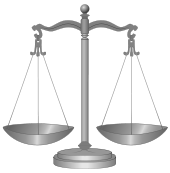- Murder–suicide
-
Suicide 
Social aspects Legislation ·
Philosophy
Religious views · Euthanasia
Right to die · Benevolent suicideSuicide crisis Assessment of risk · Crisis hotline · Intervention · Prevention · Suicide watch Suicide types Assisted · Copycat · Cult · Familicide · Forced · Honor · Internet · Mass · Murder–suicide · Parasuicide · Suicide attack · By cop · Pact Epidemiology Gender · Suicide rate History Suicide in antiquity · List of suicides · Suicide methods (Hanging, London Underground) Related phenomena Ideation · Self-harm · Suicide note · Locations · Failed suicide attempt By country Canada · China · France · India · Japan · Pakistan · South Korea · United States Rates List of countries by suicide rate
List of OECD countries by suicide rate
Homicide Murder Note: Varies by jurisdiction Assassination · Child murder
Consensual homicide
Contract killing · Felony murder rule
Honor killing · Human sacrifice (Child)
Lust murder · Lynching
Mass murder · Murder–suicide
Proxy murder · Lonely hearts killer
Serial killer · Spree killer
Torture murder · Feticide
Double murder · Misdemeanor murder
Crime of passion · Internet homicide
Depraved-heart murderManslaughter in English law
Negligent homicide
Vehicular homicideNon-criminal homicide Note: Varies by jurisdiction Justifiable homicide
Capital punishment
Human sacrifice
Feticide
MedicideBy victim or victims Suicide Family Other PseudocideA murder–suicide is an act in which an individual kills one or more other persons before or at the same time as killing himself or herself. The combination of murder and suicide can take various forms, including:
- Suicide to facilitate murder, as in suicide bombing
- Murder which entails suicide, such as driving a car of four off a bridge
- Suicide after murder to escape punishment
- Suicide after murder as a form of self-punishment due to guilt
- Joint suicide in the form of killing the other with consent, and then killing oneself
- Murder before suicide with the intent of preventing future pain and suffering of family members, such as a husband killing his wife and children before suicide.
Many spree killings have ended in suicide, such as in many school shootings. Some cases of cult suicide may also involve murder.
Contents
Homicide and suicide
According to the psychiatrist Karl A. Menninger, murder and suicide are interchangeable acts – suicide sometimes forestalling murder, and vice versa.[1] Following Freudian logic, severe repression of natural instincts due to early childhood abuse, may lead the death instinct to emerge in a twisted form. The cultural anthropologist Ernest Becker, whose theories on the human notion of death is strongly influenced by Freud, views the fear of death as a universal phenomenon, a fear repressed in the unconscious and of which people are largely unaware. This fear can move individuals toward heroism, but also to scapegoating. Failed attempts to achieve heroism, according to this view, can lead to mental illness and/or antisocial behavior.[2]
In a research specifically related to murder–suicide, Milton Rosenbaum (1990) discovered the murder–suicide perpetrators to be vastly different from perpetrators of homicide alone. Whereas murderer–suicides were found to be highly depressed and overwhelmingly men, other murderers were not generally depressed and more likely to include women in their ranks.[2] In the U.S. the overwhelming number of cases are male-on-female and involve guns.[3] Around one-third of partner homicides end in the suicide of the perpetrator. From national and international data and interviews with family members of murder–suicide perpetrators, the following are the key predictors of murder–suicide: access to a gun, a history of substance abuse, the male partner some years older than the female partner, a break-up or pending break-up, a history of battering, and suicidal ideation by the perpetrator.
Though there is no national tracking system for murder–suicides in the United States, medical studies into the phenomenon estimate between 1,000 to 1,500 deaths per year in the US,[4] with the majority occurring between spouses or intimate partners, males were the vast majority of the perpetrators, and over 90% of murder suicides involved a firearm. Depression, marital or/and financial problems, and other problems are generally motivators.
See also
- Crime of passion
- Mass murder
- School shooting
- Serial killer
- Spree killer
- Shinjū
- Suicide attack
- Terrorism
Further reading
- van Wormer, K. & Roberts, A.R.(2009) Death by Domestic Violence:Preventing the Murders and Murder–Suicides. Westport, CT:Praeger
References
- ^ Karl Menninger quote
- ^ a b Katherine van Wormer & Chuk Odiah, Journal of Criminal Justice, 27(4), 361–370.
- ^ Warren-Gordon, Kiesha, Bryan Byers, Stephen Brodt, Melissa Wartak, and Brian Biskupski. "Murder Followed by Suicide: A Newspaper Surveillance Study Using the New York Times Index WARREN-GORDON ET AL. MURDER FOLLOWED by SUICIDE." Journal of Forensic Sciences (Blackwell Publishing Limited), 55.6 (2010): 1592-1597.
- ^ American Roulette: Murder–Suicide in the United States. Violence Policy Center
External links
- QPR Institute statistics from a suicide prevention program
Categories:- Murder–suicides
Wikimedia Foundation. 2010.

